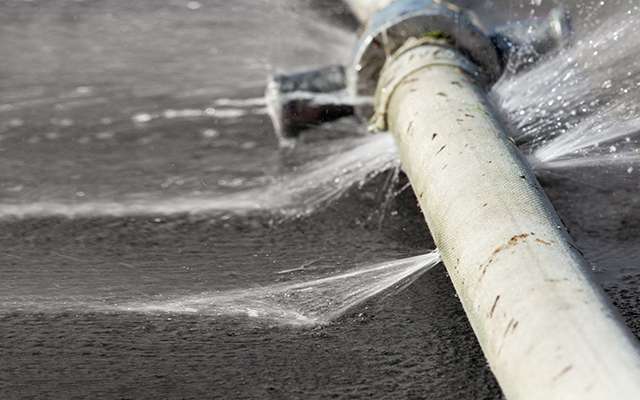A leak from your water main can be a serious issue that can lead to major property damage and extremely costly repairs. Unfortunately, water main leaks are fairly common, so it’s best to know how to identify when you have one and how to correct it. Below, we’re going over why a water main might leak when it’s your responsibility to fix it, and the steps you should take to correct the problem.
Water Main Leaks are Very Common On Private Property
Unfortunately, the constant pressure on your main water valve and the complexity of the system makes water main leaks a common issue for private property owners, especially because it’s not always so easy to get access to your water main. Leaks can occur due to corrosion or rusting, changes in weather, or the inevitable breakdown of equipment over time.
When is the Leak Your Responsibility?
Because the water main to your home bridges the gap between private and public property, property owners often don’t know if it’s their responsibility to correct the leak. From the water lines that run through your street, there will be a dedicated branch leading to your home. The water flows from the street line, through the water main on your property, to your water meter, and then to the rest of your home.
The county in which you reside is responsible for leaks in the street. The lateral that runs on your property, even before the meter, or after when the meter is at the curb, is the responsibility of the homeowner. Unfortunately for homeowners, leaks most often occur on their property, so it’s typically up to you to correct these leaks.
The Steps You Should Take
When you think you’ve identified a water main leak, follow the below steps to locate the source and get the problem corrected before it becomes even more costly and difficult to fix.
1) Determine Where the Leak Is
The first thing you need to do is figure out if the leak is from your main service line, your irrigation system, and/or secondary and tertiary lines, all of which are common. Begin with a simple “Meter Test” as follows:
- Turn Off All Water: Start by making sure there isn’t any water being used inside or outside your home including lawn or garden irrigation, toilets, washers, dishwashers, faucets, icemakers, automatic backwashing, and whole-house water filters. Everything must be completely off.
- Check Water Flow Indicator: open or lift the cover on the water meter to see if it has a flow indicator. This is a small rotating wheel or small red triangle on the meter that can detect even small amounts of water flow. If the flow indicator is moving (turning), you have a leak somewhere in your house or yard.
2) Call a Leak Detection Professional
While the first step will help identify where the issue is, you’ll need to call a professional leak detection expert to identify the location of the leak. Typically, a licensed plumber who is highly trained and knowledgeable will be able to tell you whether you have a leak or not. But, in most cases will not be able to pinpoint the location of the leak along the waterline itself. Being able to pinpoint the exact location of the leak will save you time, money, and minimize any destruction that has to take place remediating or repairing the issue.
After you’ve determined where your leak is coming from, contact one of our highly-trained leak detection experts to pinpoint the exact location of the leak so you can begin repairs.

